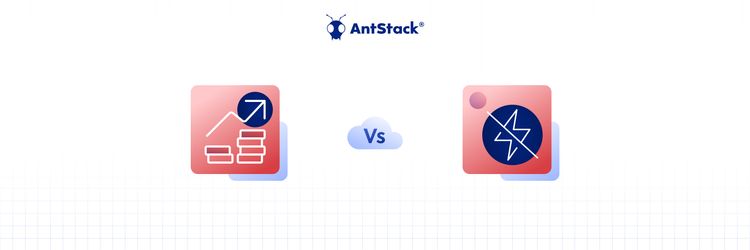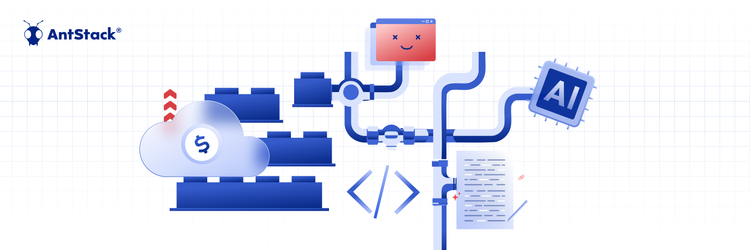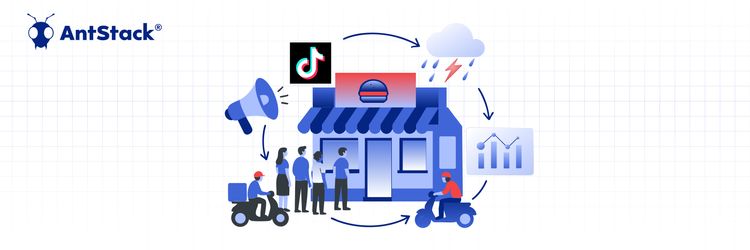As the CEO of AntStack, a serverless solution provider, I've seen firsthand the challenges that startups face when trying to scale their operations. Today, I want to share some insights and experiences that might help you navigate the often turbulent waters of startup growth.
Scaling challenge with Low-Code Prototype
Many startups begin their journey with low-code or no-code platforms. It's like building your first house with Lego blocks – quick, easy, and great for prototyping. But as your needs grow, you might find yourself trying to build a skyscraper with those same Lego blocks.
Their journey with ambitious goals are soon constrained by traditional infrastructure limitations. Layr started with a simple Insurtech system but quickly outgrew their initial platform. It's a common story: what works for product-market fit often struggles during the growth phase.
Layr eventually aimed to achieve a 5x improvement in productivity within 18 months of launch - a goal that would have been daunting with conventional setups.
By adopting a serverless approach, Layr not only met but exceeded their targets. The transition to Infrastructure as Code (IaaC) eliminated manual configurations, reducing human error and significantly boosting efficiency. Almost every AWS service deployment, including CI/CD pipelines, was orchestrated using IaaC templates, ensuring consistency and scalability.
This process, driven by serverless implementation methodologies and best engineering principles, laid the groundwork for predictable and efficient future planning. It's a testament to how serverless can turn scaling challenges into a catalyst for innovation and growth.
The Bandwidth Bottleneck
Picture this: you're a chef with a suddenly popular restaurant. You've got a line out the door, but your kitchen can only handle so many orders. That's what happens when your existing team hits its bandwidth limit.
One startup I worked with found themselves in this exact situation. They had funding, a great product, and a ton of demand. What they didn't have was the capacity to innovate and build new features fast enough.
Their lean engineering team was focused on the backend and core product development, leaving gaps in frontend engineering and user interface design.
This is where serverless architecture shines. By offloading infrastructure management and scaling concerns, their core engineering team could focus on what they do best - building their product. We stepped in to complement their skills, handling the frontend engineering and UI development. This collaboration allowed this startup to scale their operations without the need for a massive team expansion, maintaining their agility while meeting growing demands.
The Technical Debt Trap
Technical debt is like credit card debt for your codebase. A little can be useful, but too much will cripple you. I've seen startups accumulate technical debt faster than a shopaholic at a Black Friday sale.
I have seen startups that come to us with ignored technical debt, leading to decreased productivity, increased bug rates, and difficulty in implementing new features. It can even make your system more vulnerable to security breaches. The long-term consequences can be severe, potentially leading to complete system rewrites or loss of market share due to inability to innovate quickly.
Serverless architectures helped them mitigate technical debt in several ways:
- Managed Services: By using managed services, you reduce the amount of code you need to maintain.
- Microservices Architecture: Serverless naturally encourages a microservices approach, making it easier to update and replace individual components without affecting the entire system.
- Automatic Scaling: With serverless, you don't accumulate debt from over-provisioning or under-provisioning resources.
- Continuous Deployment: Serverless platforms often come with tools that make continuous integration and deployment easier, encouraging regular updates and refactoring.
The Serverless Solution
This is where serverless architecture comes in. Think of it as having a magical kitchen that expands and contracts based on your needs. You don't need to worry about managing the stoves and fridges (servers); you just focus on cooking great food (building your product).
When we implemented a serverless solution for Azuga, we reduced their operational costs by 80% and got them live in just 8 months. It's not just about cost, though – it's about flexibility and focus.
The UX Factor
Your backend might be a marvel of engineering, but if your frontend looks like it was designed by a backend engineer (no offense to my backend friends), you've got a problem. It's like having a Michelin-star kitchen but serving the food on paper plates.
We've worked with startups that had brilliant backends but struggled with user experience. By bringing in UX-driven development, we've helped transform clunky interfaces into sleek, user-friendly experiences.
For instance, when working on a few startups, we focused on creating a seamless user interface that complemented their robust backend. The design process involved:
- User-Centered Design: We started with user research to understand the needs and pain points of target audience.
- Intuitive Navigation: We implemented a clean, intuitive navigation structure that made it easy for users to find what they need.
- Responsive Design: The interface was designed to work flawlessly across all devices, from desktop to mobile.
- Performance Optimization: We ensured that the frontend was optimized for speed, complementing the efficiency of the serverless backend.
This focus on UX not only improved user satisfaction but also reduced the learning curve for new users, accelerating the startup’s growth.
The Data Dilemma
As your startup grows, so does your data. It's like suddenly inheriting a library but not knowing how to categorize the books. Many startups find themselves drowning in data without knowing how to use it effectively.
With the rise of AI and machine learning, your data isn't just a byproduct – it's a goldmine. We've helped startups implement serverless data solutions that not only manage their growing data but turn it into a competitive advantage.
The Path Forward: Let us help you Scale
Scaling a startup isn't easy. It's a journey filled with technical challenges, growing pains, and difficult decisions. But with the right approach and tools, it's also an incredibly rewarding experience.
Serverless architecture isn't a magic bullet, but it does provide a flexible, scalable foundation that can grow with your business. It allows you to focus on what matters most – your product and your customers – while leaving the infrastructure headaches to us.
Whether you're just starting out or you're in the midst of a growth spurt, remember: your technical architecture should enable your growth, not hinder it. And if you ever find yourself building skyscrapers with Lego blocks, give us a call. We might just have the building blocks you need.
Explore the Next Tech Leader huddle created for all technology leaders driving high-growth startups.









